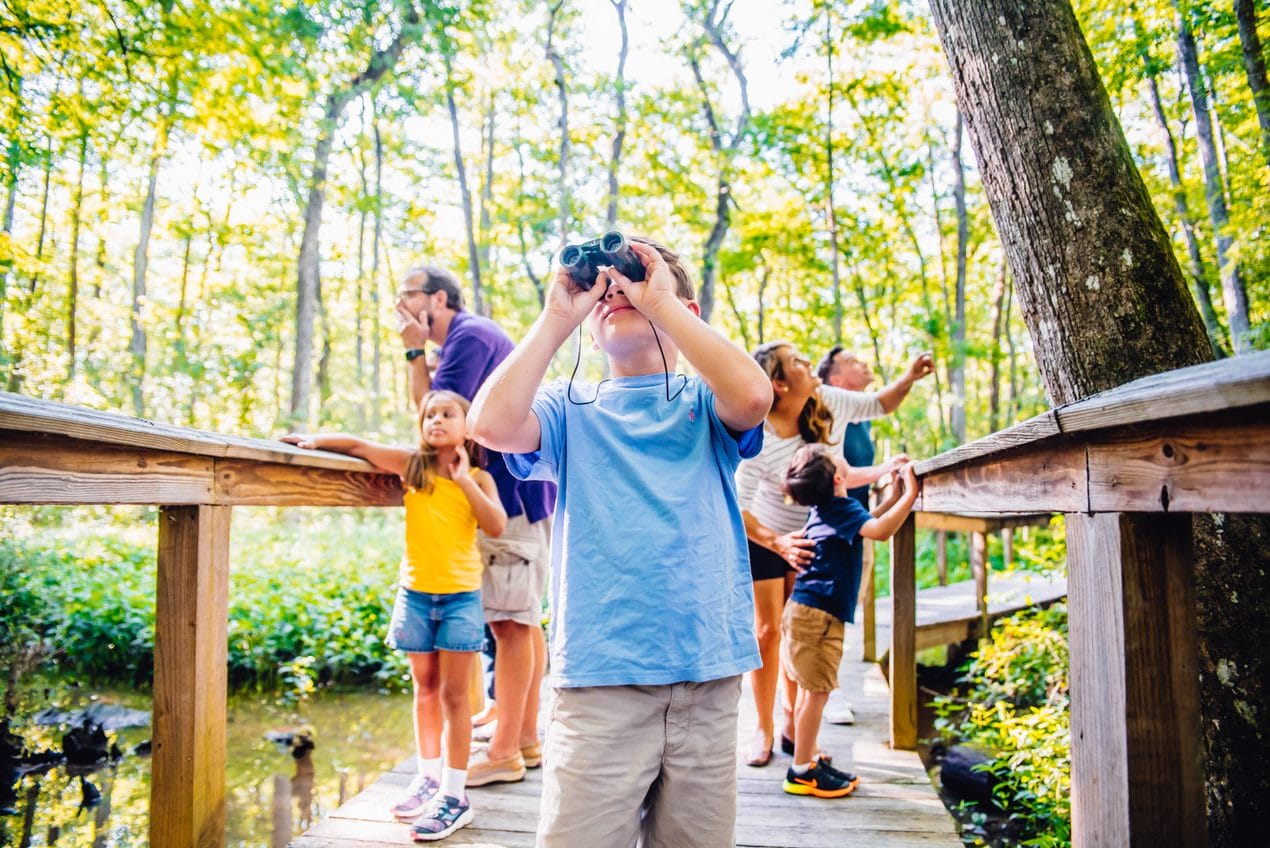
Ten years after Katrina, a new chapter for New Orleans parks
Ten years after Katrina, a new chapter for New Orleans parks
When Hurricane Katrina tore through New Orleans in August 2005, it left 90 percent of historic City Park—an area larger than New York’s Central Park—underwater. It was a heavy blow to an urban oasis that had served millions of people every year: locals and visitors who came to play sports, stroll among the majestic live oaks, and tour the New Orleans Museum of Art.
“People were anxious to get back in the park,” City Park CEO Bob Becker told Land&People magazine in 2007—and they were willing to work to make that happen. As soon as the floodwater receded, volunteers arrived to clear debris and restore landscaping.
The Trust for Public Land focused on 50 acres near the park entrance, taking the opportunity to rebuild better than before. An abandoned golf course became an open meadow, complete with a hiking and biking pathway, easier access to the lake, and a new boat dock.
Today, City Park is once again the green heart of New Orleans, and planners have turned their attention to the challenge of weathering storms to come. For The Trust for Public Land, the question now is not just how the community can protect its parks—but how parks can protect the community.
“We’re a city with old infrastructure,” explains The Trust for Public Land’s Louisiana state director Cindy Brown. “It takes energy and a lot of maintenance to operate. And topographically, we’re in a bowl: every drop of rain that falls has to be pumped out.”
Like other communities working with The Trust for Public Land’s Climate-Smart Cities™ program, New Orleans is looking to parks and green space to help manage stormwater—as well as other climate-related challenges, such as the heat island effect. This “green infrastructure” takes various forms: from wetland restoration and school playground renovation to projects like the Lafitte Greenway, which help curb carbon emissions by making it easier for residents to walk and bike instead of drive.
Katrina exposed weaknesses in the city’s infrastructure, but it also showed how the burden of risk caused by those weaknesses falls disproportionately on lower-income communities: both more likely to be in harm’s way, and less able to get of it. For that reason, Brown says, the city wants to prioritize green infrastructure where it can have the greatest impact on vulnerable populations.
With climate scientists predicting an increase in the frequency of extreme weather events like Katrina, identifying where parks can do the most to protect urban communities is increasingly urgent and complex. The Trust for Public Land’s Climate-Smart Cities™ program uses GIS mapping to identify where, as Brown puts it, parks can “solve multiple problems in a single strike.”
For a look at how it works, check out Survive and Thrive , an in-depth look at the Climate-Smart Cities™ program from the latest issue of Land&People magazine.
One-third of Americans, including 28 million children, lack safe, easy access to a park within a 10-minute walk of home. Urge your senators to pass the Outdoors for All Act to create parks and enhance outdoor recreational opportunities!


Donate to become a member, and you’ll receive a subscription to Land&People magazine, our biannual publication featuring exclusive, inspiring stories about our work connecting everyone to the outdoors.
See how our supporters are helping us connect people to the outdoors across the country.


